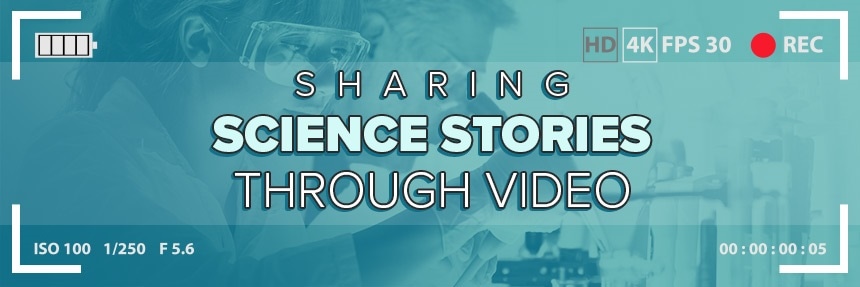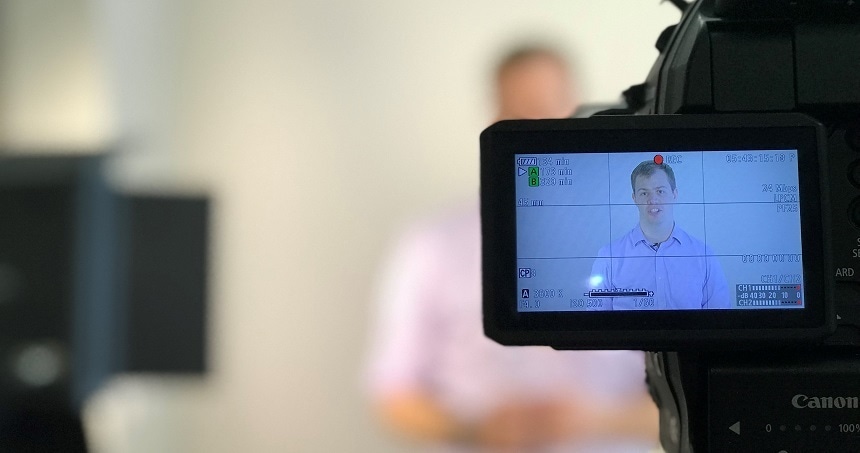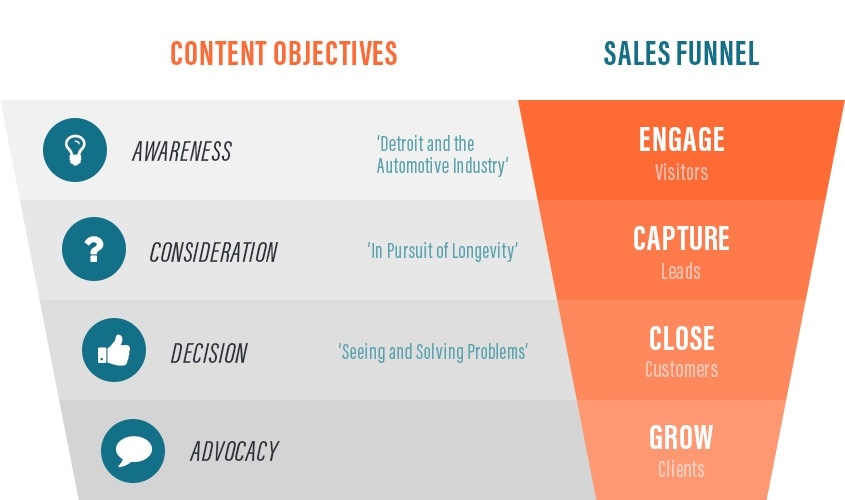
Capturing customer testimonials on video
Working within Science, Engineering and Healthcare presents challenges to telling your story: How do you make your products come alive?
One way we have found to be incredibly effective is to interview the very academics, engineers and industry professionals who use the products on a day to day basis. We spoke to chief videographer Kris Walker about what makes a good interview subject and how to capture the right people on camera.
How many customer testimonial interviews have you done?
We’ve been interviewing customers of our own clients for over five years now and we have interviewed a range of experts: Ranging from tribology engineers in the automotive industry to research specialists in preclinical imaging. In that time, we have interviewed hundreds of key opinion leaders in their fields as well as Nobel Prize winners.
Which locations work best?
If there is an instrument that is being discussed, we would like to interview with the product carefully out of focus in the background. However, sometimes you have to work with what you are given which can sometimes be a university basement, a dimly lit conference room or a lab with audio problems. The most interesting place that we have filmed was a place in Ancona Italy where the company who were giving a testimonial operate across a range of varied applications. The location was stunning, the premises were recently built, powered completely using renewable energy and the testimonial given was incredibly powerful.

What subject makes for an interesting customer testimonial?
Application focused interviews are always interesting simply because you are targeting a particular type of audience persona. Focusing on the application within the title and the first 30 seconds will keep the viewer engaged for longer.
"Weave a storyline around the product or instrument in question"
Generally, we like to talk about their research as that is what the target audience would be gripped by. We also need to weave a storyline around the product or instrument in question. That’s where the editing comes in; we create an engaging video that piques the interest of the viewer and leads them to request further information.

The Video Funnel
Although we generally aim to keep videos under the 3 minute mark, we have just produced three videos that are longer. This was down to the interviewee Don Cohen’s storytelling ability, his enthusiasm for the industry and the fact that they were also part of a larger distribution strategy for a wider campaign.
Top of funnel video
This video introduces the subject of tribology in the automotive industry and specifically focuses on the story of Detroit, the manufacturing powerhouse in the automotive industry at the time.
Tribology: Detroit and the Automotive Industry from AZoNetwork on Vimeo.
Middle of funnel video
The story continues with the challenges faced by manufacturers of improving quality control, reliability and longevity within the automotive and medical markets.
Tribology: In Pursuit of Longevity from AZoNetwork on Vimeo.
Bottom of funnel video
The mini-series reaches a conclusion in the third video as Don describes how the 3D optical profiler helps him to do his job more effectively.
Tribology: Seeing and Solving Problems from AZoNetwork on Vimeo.
How do you prepare a storyboard?
I think of each interview as a mini-documentary. So from the start I have a different mind-set to that of a product manager who, quite rightly, wants to include every last detail in the video. We can still do all of that however, we have to think of the most important element when scripting and that is the audience – how do you grip them? How do you get them to watch the whole video?
"Each interview is a mini documentary"
We structure our videos in three ways. First of all we follow the standard narrative structure for all types of promotional video – the idea of problem-solution.
We then look at it from an audience perspective, in a way our video interviews are a three-minute version of a keynote speech, we talk about research and then we talk about the equipment – we structure it in a way that the audience can relate to and are comfortable with.
Finally, we follow sales funnel theory with regards to ‘top of funnel’ general interest, moving toward a specific application in the ‘middle of funnel’, culminating with the product focused ‘bottom of funnel’. In the examples shown in this piece we were able to do that as a series of three videos - it doesn’t just end with a finished video, you then have to start thinking about distribution.

If you think about the way we digest video content nowadays, we enjoy ‘binge viewing’ a series, so a targeted newsletter and/or email campaign sent out every week or month would be an effective way of using video to its maximum potential.
Do interviewees need to have previous on-camera experience?
Previous experience always helps although I find the trick being to get the interviewee talking normally to the interviewer during set-up. Equally it’s important to make them feel comfortable in front of the camera and lights – it’s a conversation, that’s all!
Additionally, I’ve always thought there was something quite cold about a cameraman just doing their job in terms of turning up, setting the camera, getting the shot and getting out of there. If the interviewee is comfortable with everyone in the room, then they will feel relaxed and at ease enough to give the best possible answers for the company and for them.
We’re also blessed with camera guys that are scientists as well – a rare combination, so there’s a relatable element too.
Take for example how some people don't mind public speaking yet don’t like talking on the phone – why is that? Is it psychological... The fact that they can't see who they are addressing? I think the same applies here to a cameraman – Building a relationship with the interviewee and having a personal touch from your crew will go a long way. We’re also blessed with camera guys that are scientists as well – a rare combination, so there’s a relatable element too.
What challenges do you face when filming?
There are no insurmountable challenges when filming. It sounds strange, but it's true. Unless your camera blows up you can overcome everything – Bad audio? Change the location. Bad light? Change the lighting. Nervous in front of camera? Take your time. The challenge comes in the editing and carving out the important pieces from what can be a lot of content. Also, if it is something rather specific – you may have to get creative with b-roll and visualising certain things can be tricky. You don’t want a three-minute video just of someone talking – the audience will just switch off.
Where do you see clients using the finished product?
A good question, and something that needs to be considered when entering into any video discussion – how will you use this video? It’s like animation – all good and well paying a king’s ransom to see an animated version of your product moving up and down but how and where will it be used?
If you are going to part with your money on video, you have to think about how to maximise its use. For an interview, can it be turned into a quality piece of written content? Can you add subtitles in another language to expand your audience even further. Can I produce a series where I can feature in a newsletter or email campaign? Can I have the videos on a loop at a tradeshow? Can they be used for training purposes?
There are so many more ways you can use a finished video rather than just embedding it onto your website.
Book a Video Storyboarding Session
Related Video Testimonials
AZoNetwork's own Customer Testimonial with Steve Hopkins from Bruker Corporation.
-

We originally had problems getting our speakers to participate... Their team is instrumental in reaching our speakers to provide video interviews and testimonials.
Marian Nardozzi Pittcon
-

They understand the importance of marketing automation. From educational emails, to video shoots, to streamlined reporting dashboards, they keep moving forward.
Sandy Schiller Spectro Scientific
-

AZoNetwork has been our most valuable vendor/partner in marketing over the last several years. They help us look good, and make us heroes in our own company.
Steve Hopkins Bruker